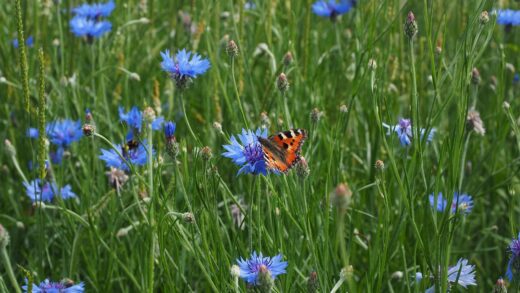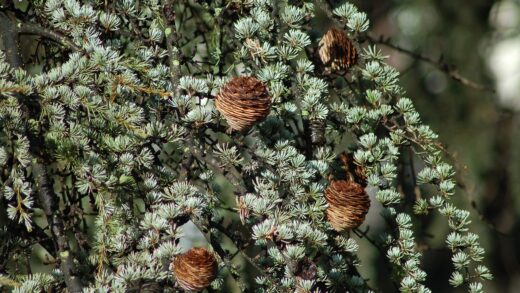The availability of adequate sunlight is one of the most fundamental and non-negotiable requirements for the successful cultivation of the Asian persimmon. Light is the primary energy source that fuels photosynthesis, the vital process through which the tree creates the sugars necessary for its growth, development, and, most importantly, the production of sweet, flavorful fruit. The quantity, quality, and duration of sun exposure directly influence the tree’s overall vigor, its ability to set fruit, the size and color of the harvest, and the sugar content that defines its taste. Therefore, a thorough understanding and strategic management of light are essential for any grower aiming for a productive persimmon tree.
Asian persimmon trees are, without exception, sun-loving plants that thrive in conditions of full, direct sunlight. This means they require a minimum of six to eight hours of unobstructed sun exposure each day during the growing season. A planting location that provides anything less will inevitably lead to a range of issues, including sparse foliage, elongated and weak branch growth (etiolation), and a significant reduction in flowering and fruit set. A tree grown in partial shade may survive, but it will likely never reach its full potential in terms of growth or fruit production.
The role of sunlight extends beyond basic energy production. It also plays a crucial part in the development of the fruit’s characteristic deep orange or reddish color. The pigments responsible for this coloration develop in response to light exposure. Fruit that is shaded by a dense canopy of leaves will often be paler and less visually appealing than fruit that has been bathed in sunlight. Furthermore, this light exposure is directly linked to the accumulation of sugars in the fruit, meaning that a sun-drenched persimmon will not only look better but will also taste significantly sweeter.
Consequently, all aspects of persimmon cultivation, from initial site selection to long-term maintenance practices like pruning, should be geared towards maximizing light interception. The choice of the planting site is the first and most critical decision in this regard. Subsequent care, particularly the annual pruning regimen, should be focused on maintaining an open canopy structure that allows sunlight to penetrate deep into the tree, ensuring that all parts of the tree, including the lower and inner branches, can contribute to energy production and fruit development.
The role of sunlight in persimmon development
Sunlight is the engine that drives the entire life process of the persimmon tree through photosynthesis. In this remarkable process, the chlorophyll in the leaves captures light energy and uses it to convert carbon dioxide and water into glucose (sugar) and oxygen. This glucose is the tree’s primary food source, providing the energy for all metabolic activities, including the growth of new leaves, branches, and roots. Without sufficient light, the rate of photosynthesis slows, leading to a direct reduction in the tree’s energy budget and resulting in weak, stunted growth.
More articles on this topic
The energy generated through photosynthesis is not only used for vegetative growth but is also essential for the tree’s reproductive cycle. The formation of flower buds, the process of flowering itself, and the subsequent development of fruit are all highly energy-intensive processes. A persimmon tree that is light-starved will not have the necessary energy reserves to produce a robust crop. It may fail to form an adequate number of flower buds or may drop its flowers or young fruit prematurely as it lacks the resources to support their development.
Sunlight also has a direct impact on the quality of the fruit that is produced. The sugars created in the leaves are transported to the developing fruits, which act as “sinks” for this energy. The more sunlight the tree’s canopy can intercept, the more sugar it can produce, and the sweeter the resulting fruit will be. This is why fruit harvested from the sunny, outer parts of the tree is often larger and more flavorful than fruit grown in the shaded, interior sections.
Furthermore, direct sun exposure on the fruit itself influences its ripening process and color development. The heat from the sun helps to mature the fruit, while the light itself stimulates the production of carotenoid pigments, which give the persimmon its brilliant orange hue. A well-pruned tree with an open canopy allows sunlight to reach the individual fruits, ensuring they ripen evenly and develop a deep, uniform color, which is a key indicator of quality and ripeness, especially in non-astringent varieties.
Optimal sun exposure for planting
Selecting a planting site with optimal sun exposure is the most critical decision you will make for the long-term success of your persimmon tree. The ideal location is one that receives full, direct sunlight from morning until late afternoon. In the Northern Hemisphere, this typically means a location with a southern or western exposure. A site that is shaded by buildings, large trees, or other structures for a significant portion of the day should be avoided, as it will compromise the tree’s ability to thrive.
More articles on this topic
Before planting, it is wise to observe the proposed location throughout an entire day to accurately assess its sun exposure. Note when the area first receives direct sun in the morning and when it becomes shaded in the evening. Track the path of shadows cast by nearby objects and consider how these shadows might change with the seasons as the sun’s angle in the sky shifts. Remember to account for the future growth of other young trees in the vicinity, which could eventually cast a shadow on your persimmon tree.
In addition to the duration of sunlight, the intensity of the light is also important. While persimmons thrive in full sun, in extremely hot and arid climates with intense, scorching summer sun, some protection during the hottest part of the afternoon can sometimes be beneficial for young, newly planted trees to prevent stress and leaf scorch. However, for established trees, more sun is almost always better. The goal is to find a balance that provides the maximum possible light without causing undue stress.
When planning the layout of an orchard or garden, proper spacing between trees is crucial to ensure that each tree will have adequate access to sunlight as it matures. Planting trees too close together will lead to competition for light, causing the trees to grow tall and spindly as they reach for the sun, with the lower branches becoming shaded and unproductive. Spacing recommendations vary by variety and rootstock, but ensuring ample room for each tree’s mature canopy is a key principle of light management.
Effects of insufficient light on growth and fruiting
A persimmon tree that does not receive enough sunlight will exhibit a range of predictable and undesirable symptoms. One of the most common signs is weak, leggy growth, a condition known as etiolation. The branches will become elongated and thin as the tree stretches in an attempt to find more light. This type of growth is structurally weak and more susceptible to breaking under the weight of fruit or in strong winds. The foliage will also be affected, often appearing sparse and a lighter shade of green than that of a healthy, sun-grown tree.
Insufficient light has a profoundly negative impact on the tree’s ability to produce fruit. A shaded tree will produce far fewer flower buds, and the ones it does produce may not be viable. The tree will often shed a large proportion of its flowers and small, developing fruits because it simply lacks the photosynthetic energy required to support them through to maturity. The result is a meager harvest or, in cases of heavy shade, a complete failure to produce any fruit at all.
Even if a shaded tree manages to produce some fruit, the quality will be severely compromised. The lack of sunlight means less sugar production, resulting in fruit that is bland, insipid, and lacking the rich sweetness that is the hallmark of a good persimmon. The fruit will also fail to develop the deep, attractive orange color that indicates ripeness and quality. Instead, it will likely remain pale, yellowish, or unevenly colored, making it much less appealing.
Furthermore, a lack of direct sunlight and the resulting poor air circulation create a microclimate that is more favorable for the development of fungal diseases. A dense, shaded canopy stays damp for longer after rain or morning dew, providing an ideal breeding ground for pathogens like powdery mildew, Cercospora leaf spot, and sooty mold. Thus, insufficient light not only robs the tree of the energy it needs to grow and fruit but also makes it more vulnerable to a host of health problems.
Managing light through pruning and site management
Pruning is the most important tool for managing light within the canopy of an established persimmon tree. The primary goal of pruning for light management is to create and maintain an open structure that allows sunlight to penetrate deep into the tree’s interior. This ensures that a greater proportion of the tree’s leaves are photosynthetically active and productive. A well-pruned tree should have a dappled light pattern on the ground beneath it, rather than a dense, solid shadow.
This is typically achieved by using a combination of thinning cuts and selective heading cuts during the dormant season. Thinning cuts, which remove entire branches back to their point of origin, are used to open up the canopy, remove crossing or crowded branches, and improve air circulation. This is preferable to excessive heading cuts, which can encourage a dense thicket of new growth that shades the tree’s interior. The aim is to develop a well-spaced framework of scaffold branches that allows light to reach all parts of the tree.
Beyond pruning the persimmon tree itself, managing the surrounding site is also crucial for long-term light availability. This may involve periodically pruning or even removing nearby trees or large shrubs that have grown over time and begun to cast a shadow on the persimmon tree. It is important to be proactive and address potential shading issues before they become severe. A tree that has grown for several years in increasing shade can be difficult to rejuvenate.
In situations where a persimmon tree is already established in a location with marginal light, there are a few strategies that can help to maximize the available sun. Painting a nearby wall or fence white can help to reflect additional light onto the tree. Keeping the canopy well-thinned and managing the tree’s size to keep it from growing into more shaded areas are also critical. However, it is important to recognize that these are compensatory measures, and there is no true substitute for selecting a site with full sun exposure from the very beginning.



















